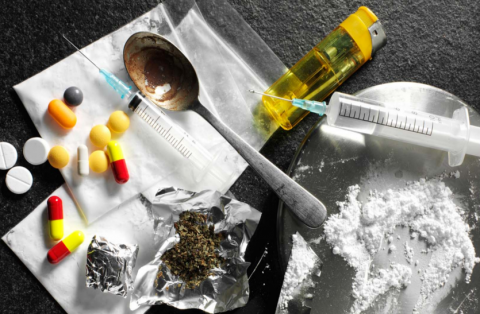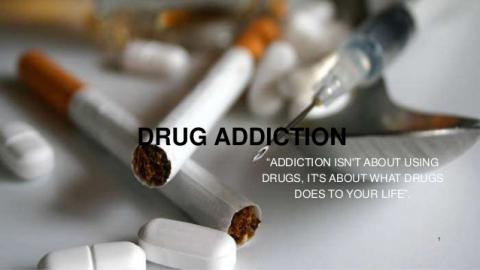+1(209) 348-9544
order@myessayservices.com
+1(209) 348-9544
order@myessayservices.com
![]() Are you in High School, College, Masters, Bachelors or Ph.D and need assistance with your research paper? All you need is to ask for essay help written by a specialist in your academic field. When you buy an essay from us, we offer you an original, nil plagiarized and unique paper written by a dedicated writer who is PhD or Masters qualified. MyEssayServices.com is an experienced service with over 9 years experience having delivered over 83,000 essays over the years.
Are you in High School, College, Masters, Bachelors or Ph.D and need assistance with your research paper? All you need is to ask for essay help written by a specialist in your academic field. When you buy an essay from us, we offer you an original, nil plagiarized and unique paper written by a dedicated writer who is PhD or Masters qualified. MyEssayServices.com is an experienced service with over 9 years experience having delivered over 83,000 essays over the years.

Introduction
 The introduction of drugs into the society has long been a serious problem. The dependency that many of these drug users develop over time becomes a serious problem that no longer affects the addicts alone. Within no time, their families and the entire society, in turn, is affected. The most affected by drug abuse remain to be the youth (Wills, 2005). The poor judgment of youth and susceptibility to peer pressure is often the main cause of youth indulging in drugs. The desire to please their friends and ‘fit in’ often ends in disaster. There is a high need to curb drug abuse so as to reduce the effects of drugs on society.
The introduction of drugs into the society has long been a serious problem. The dependency that many of these drug users develop over time becomes a serious problem that no longer affects the addicts alone. Within no time, their families and the entire society, in turn, is affected. The most affected by drug abuse remain to be the youth (Wills, 2005). The poor judgment of youth and susceptibility to peer pressure is often the main cause of youth indulging in drugs. The desire to please their friends and ‘fit in’ often ends in disaster. There is a high need to curb drug abuse so as to reduce the effects of drugs on society.
Effects
The biggest and most devastating effect of drugs is addiction. The dependency developed by many youth when they indulge in drugs is one that ruins the lives of these youths. Every drug from steroids to hallucinogens to painkillers have a tendency to create dependency in the user. The abuse of these drugs results in a state where the individual cannot do without the drugs (Wills, 2005). If it is a painkiller, then the individual cannot feel at ease without taking the drug. The worst part is that with addiction comes reduced drug efficiency. Many of the drugs that are abused no longer have an effect on the individual’s body. This is a situation that results in dependency without results.
Drug abuse is also responsible for unhealthy and sickly individuals. Many drug addicts begin using drugs as a hobby or a pastime, but this eventually results in an unhealthy and often sickly individual. The decline of bodily functions as a result of drug abuse is responsible for many deaths in drug addicts (Hanson, Venturelli, Fleckenstein, 2012). Many of these youths end up sick and suffer from conditions like high blood pressure, renal failure as well as respiratory tract infections. These are some of the leading causes of fatalities among drug addicts. Drugs often start out as helpful, but in reality they are slow poisons that many youth take in little doses over a long time before they realize that they are slowly killing themselves.
The society is then left with a weak and sickly population of young adults who are incapable of taking over the society’s leadership positions. The result is a misguided society, with tired and old leaders who are unable of effecting any real change.
Methamphetamine
 Methamphetamine is one of the leading hard drugs that sit in the same pool as other hard drugs like cocaine. It belongs to a larger group of drugs called amphetamines that are, and have been used as medicinal drugs for ages. The creation of crystal amphetamine in Japan in the year 1919 was the beginning of the problems that society faces today, insofar as battling drug abuse is concerned. This drug spread in popularity and was first used as a medical drug for clearing bronchial passages and curing asthma.
Methamphetamine is one of the leading hard drugs that sit in the same pool as other hard drugs like cocaine. It belongs to a larger group of drugs called amphetamines that are, and have been used as medicinal drugs for ages. The creation of crystal amphetamine in Japan in the year 1919 was the beginning of the problems that society faces today, insofar as battling drug abuse is concerned. This drug spread in popularity and was first used as a medical drug for clearing bronchial passages and curing asthma.
Spalding claims that, as human curiosity would have it, the discovery that the use of this drug in heavy doses was extremely pleasurable is responsible for the large following that crystal methamphetamine, or ‘meth’ as it is commonly referred to as, ‘enjoys’ (2007). Over the years, methamphetamine has become cheaply available to the public as well as easy to manufacture. The ease with which one can manufacture methamphetamine is the origin of one of its many street names-stove top.
Covey asserts that the side effects that many meth addicts suffer from are a testament of the danger that this drug poses to the human body and to the society at large (2007). The side effects are either short-term or long-term. The short-term effects of methamphetamine include increased attention, decreased fatigue, hyperthermia, irregular heartbeat, increased wakefulness and activity, increase in respiration, decreased appetite and last but definitely not least, euphoria. These effects put the user in a completely different world that is full of pleasure and enjoyment. The rush that many users experience is also the origin of one of the street names that this drug has been christened.
Short-term effects aside, there are also long-term effects that many users suffer from on a daily basis. The worst of all long-term effects is addiction. This is a state in which a drug addict cannot live without the drug. The addict feels irritable and abnormal without the use of the drug. In the event that recovery is in progress, addiction results in drug relapses where the addict aggressively seeks out the drug to satisfy the craving. The result is an addict that can easily fall back into the abyss of methamphetamine addiction (Spalding, 2007).
The addict also suffers from severe dental infections. The result is a scenario that characterizes the abuse of methamphetamine called ‘meth mouth’. The teeth decay and even fall off, leaving large gaps between the teeth of the addict. Psychosis is also a characteristic feature of methamphetamine abuse. The psychotic individuals often exhibit paranoia, repetitive motor activity as well as experience hallucinations. This is a manifestation of the effects that methamphetamine has on the brain. Other effects include mood swings and disturbances, violent behavior, weight loss and memory loss.
Methamphetamine is a drug that is widely abused mainly because of two reasons. First, the availability and cheap nature of methamphetamine in comparison to cocaine makes it the better option for many drug users (Covey, 2007). Many individuals opt for methamphetamine because it is cheaper, and more accessible than cocaine while maintaining a similar effect.
The second reason why many drug addicts indulge themselves in methamphetamine is the euphoria or rush that comes along with it. Methamphetamine is responsible for the release of Dopamine, a neurotransmitter that is associated with pleasure. The excessive release of this neurotransmitter is responsible for the rush feeling many addicts feel when they take methamphetamine. It is approximated that methamphetamine releases twelve times the dopamine released in pleasurable activities such as sex and food consumption.
Conclusion
 The abuse of drugs and in particular methamphetamine has a detrimental effect on the society. The addiction of many youths on this and other drugs results in a society that experiences decreased productivity and efficiency. Many youths spend their time chasing after drugs and doing despicable acts just to get money to satisfy their addictions. Many youths have also succumbed to the effects brought about by these drugs.
The abuse of drugs and in particular methamphetamine has a detrimental effect on the society. The addiction of many youths on this and other drugs results in a society that experiences decreased productivity and efficiency. Many youths spend their time chasing after drugs and doing despicable acts just to get money to satisfy their addictions. Many youths have also succumbed to the effects brought about by these drugs.
The most common cause of death in drug addicts is overdose. The desire to ‘chase the dragon’ by many addicts forces them into taking heavy doses of the drugs (Hanson, Venturelli, Fleckenstein, 2012). The society continues to lose many able-bodied youths to drug abuse while the drug barons in charge mint millions. It is necessary that the fight against drug abuse picks up speed to ensure that many youths are saved from the strong jaws of ruination and death by drug abuse.
References
Covey, H. C. (2007). The methamphetamine crisis: Strategies to save addicts, families, and communities. Westport, Conn: Praeger Publishers.
Hanson, G., Venturelli, P. J., & Fleckenstein, A. E. (2012). Drugs and society. Sudbury, MA: Jones & Bartlett Learning.
Spalding, F. (2007). Methamphetamine: The dangers of crystal meth. New York: Rosen Pub.
Wills, S. (2005). Drugs of abuse. London: Pharmaceutical Press.
 Drug addiction is a chronic relapsing disease. The medical definition of this disorder is that it is the condition of an acquired abnormal state where regular administration of enough amount of the drug is a requisite for physiologic equilibrium as a result of previous prolonged use (Koob, Arends & Le, 2014). The disease process of drug addiction occurs in a cycle for the patient that contain various stages. The disease normally starts with social drug taking, or acute reinforcement where small amounts of the drug are taken to excite the brain. For some individuals, this escalates to a pattern of heightened compulsive use which ultimately brings about the third stage, which is dependence. At this stage, the disease has moved from impulsive to compulsive. Impulsive stage's characteristics are; increased arousal or tension resulting to an impulsive act characterized by obsession, anxiety and stress. Patients then move to the withdrawal stage and protracted abstinence.
Drug addiction is a chronic relapsing disease. The medical definition of this disorder is that it is the condition of an acquired abnormal state where regular administration of enough amount of the drug is a requisite for physiologic equilibrium as a result of previous prolonged use (Koob, Arends & Le, 2014). The disease process of drug addiction occurs in a cycle for the patient that contain various stages. The disease normally starts with social drug taking, or acute reinforcement where small amounts of the drug are taken to excite the brain. For some individuals, this escalates to a pattern of heightened compulsive use which ultimately brings about the third stage, which is dependence. At this stage, the disease has moved from impulsive to compulsive. Impulsive stage's characteristics are; increased arousal or tension resulting to an impulsive act characterized by obsession, anxiety and stress. Patients then move to the withdrawal stage and protracted abstinence.
When patients experience the protracted the protracted withdrawal stage, they may move to full recovery if they seek medical help, but if not relapse takes place. Relapse is characterized by compulsion to find and use the drug, loss of control in low intake of the drug and also manifestation of negative emotional states such as anxiety, irritability and dysphoria (Prus, 2013). Through scientific research, identification of neural circuits in the brain has been done, and the action of every drug of abuse properly known. Every drug of abuse affects a specific pathway, and specific brain neurotransmitters are affected. During primary care, healthcare providers must always understand a patient’s condition and the specific sub-type of the condition for proper diagnosis (Freeman, 2013). Drug use falls into occasional controlled use, harmful use and also drug addiction.
There are important factors that affect the drug addiction disease process. The first is the environmental factors surrounding a patient. Some environmental factors such as a society, stress, conditioning and friends push a patient to the disease of drug addiction. Genetic variables also greatly contribute to the disease factor. 70% of drug addicts have a family history of this disorder, and this implies that there are genetic contributions to the disorder (Prus, 2013).
Use of pharmacological agents to treat substance addiction disorder is very valuable in primary healthcare as these agents reduce a patient’s withdrawal suffering. There are some agents already approved by the Food and Drug Administration (FDA) as efficacious (Koob, Arends & Le, 2014). The agents create patient comfort, reduce craving, alter drug effects and also help in treatment retention. Different pharmacological agents are used to treat addiction for different substances. Methadone has commonly been used to treat opioid addiction. This agent is taken orally and provide a long-acting effect, and its administration is always under controlled condition at health care facilities. The agent treats addiction to heroin, morphine and oxycodone.
There are some important pharmacological agents approved to treat alcohol addiction. They include acamprosate, disulfiram and naltrexone. Some of these agents are administered orally during others through injection. In treating opioids addiction, primary care providers administer some agents such as buprenorphine, methadone and naltrexone which are as well taken either orally or injectable. Finally, tobacco addiction is treated by administering bupropion and various nicotine replacement therapies such as patches, gum, inhalers and nasal sprays (Freeman, 2013). These approved agents serve some advantages to the patient including high treatment retention, reduced criminal activity and reduction of painful withdrawal symptoms. Counselling session during primary health care accompanies administration of these pharmacological agents.
Methadone drug therapy has some toxicities that manifest through some symptoms. This agent affects brain neurotransmitters resulting to anxiety, nervousness, sleeping problems and drowsy feeling for patients. Acamprosate also has some associated toxicities when used to treat alcohol addiction at a dose of two tablets 333mg each (Koob, Arends & Le, 2014). It results to nausea, headache, fatigue, constipation and loss of appetite for patients. The toxicities are as a result of the agent affecting various mechanisms in the body. When naltrexone is administered during clinical health care to treat alcohol or opioid addiction, black-box warning should be considered by primary care-givers. This agent causes nausea and drowsiness as it affects brain neurotransmitters.
There are some special considerations made when these pharmacological agents are being administered to an elderly patient and also pediatric patient. Methadone medication may result to respiratory depression for geriatric patients as they may alter the pharmacokinetics of older patients in a greater manner as compared to younger and healthier patients (Koob, Arends & Le, 2014). Close monitoring should be done for the geriatric patient when administering this agent, and lower doses administered as determined by primary care provider. Geriatric patients should also be closely monitored during administration of naltrexone and bupropion whereby individually tailored medication is preferable.
Developing a treatment plan and follow-up for patients during primary care results to sustained treatment. A 12 week individual counselling plan is important wherein a patient should have one session per week, 30 minutes in every session. The sessions are important to motivate patients to overcome addiction and also go through various barriers. The efficacy of pharmacological agents administered must be monitored through creation of a withdrawal diary to record symptoms of withdrawal (Prus, 2013). Follow-up care should also be done even after the residential drug addiction treatment plan. It may involve several visits to the primary care provider to monitor the progress made
References
Freeman, E. M. (2013). Substance abuse intervention, prevention, rehabilitation, and systems change strategies: Helping individuals, families, and groups to empower themselves. New York: Columbia University Press.
Koob, G. F., Arends, M. A., & Le, M. M. (2014). Drugs, addiction, and the brain. Oxford: Academic Press.
Prus, A. (2013). An Introduction to Drugs and the Neuroscience of Behavior. Cengage Learning.
Browse More Essay Topics 24/7/365 Support 11+ Yrs in Essay Writing Pay for Quality not Quantity Score that A+ Grade
Affordable Papers
Research Paper for Sale
Cheap Research Papers
Buy Term Papers
Buy Research Paper
Write My Paper
Buy an Essay
Cheap Essay Writer
Write my Essay
Thesis Help
Dissertation Help
Paper Writing Service
Pay for Homework
Pay for Research Paper
Do My Essay for Me
Pay for Essay
College Papers for Sale
Do My Homework for Me
College Essays for Sale
Buy Research Papers Online
Buy College paper
Client: "(Berlin, G.K., CA)"
Topic title:"Leadership shortfalls in Blue Chips"
Discipline: "Economics"
Pages: 5, (APA)
" Awesome, the writer delivered it as required by the professor. They also sent me a plagiarism & grammar report Wow!. I was worried about how the essay would turn up but this is exactly what wanted. Thank you and will be back with a longer essay"
Accounting Research Papers
Business Research Papers
Communication Research Papers
Computer Science Research Papers
Economic Research Papers
Film Studies Research Papers
Finance Research Papers
Geography Research Papers
History Essays
Psychology Research Papers
Political Science Research Papers
Nursing Research Papers
Mathematics Essays
Management Essays
Literature Essays
Law Essays
World Affairs Essays
Technology Essays
Sociology Essays
Science Essays
Religion Essays
+1(209) 348-9544
Terms
Privacy
Sitemap
Frequently Asked Questions
0% Plagiarism Guarantee
Money Back Guarantee
Revision Policy
